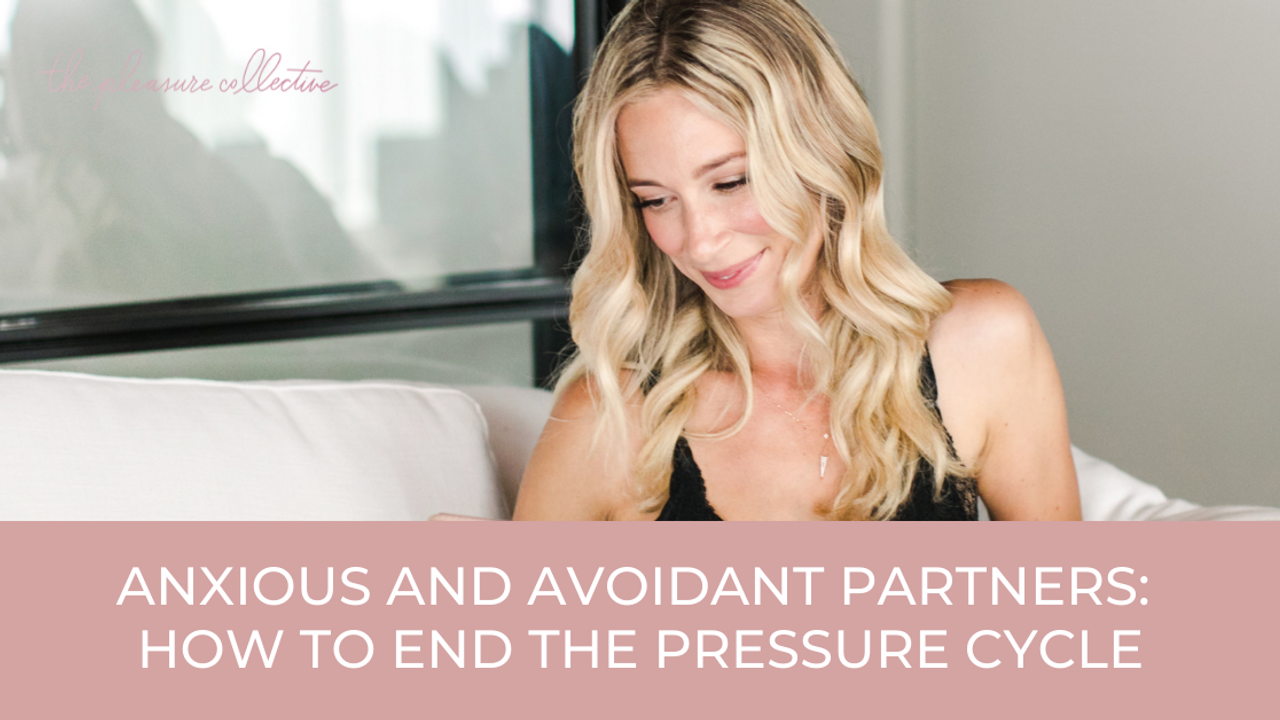Anxious and Avoidant Partners: How to End The Pressure Cycle

We often see romantic relationships where one partner has an anxious attachment style, and the other has an avoidant attachment style. It’s a common pattern, an anxious, over-functioner paired with a laid back under-functioner. However being stuck on one side of the spectrum or the other is where problems can develop and a cycle of pressure begins.
Anxious vs Avoidant Attachment
When an anxiously attached partner is with an avoidantly attached partner, it creates a very interesting dynamic.
Anxious attachment style stems from inconsistent security from your parents or caregiver as a child. Oftentimes this attachment style develops from not having your emotional needs met on a regular basis. We’ve discussed more of the intricacies behind anxious attachment styles in our last blog “Anxious Attachment Style and How You Can Heal” so make sure you check that out.
When it comes to avoidant attachment, this style stems from having your parents or caregiver avoid your emotional needs rather than attend to them as a child. Your parents may have been very attentive and provided a lot in other aspects of your life, but when it came to emotions or feelings, they took an avoidant approach instead of addressing them. This style may have made you feel as though your feelings were a burden, leading you to be super independent and self-reliant.
Anxious attachment style may be blocking you or your partner from the intimacy you want in a relationship because you have a difficult time letting people in.
Intimacy and the Cycle of Pressure
Sex and intimacy in general can make an avoidantly attached partner feel extremely uncomfortable, whereas an anxiously attached partner often pursues sex and intimacy.
When one partner is actively avoiding intimacy while the other craves that connection, a cycle of pressure begins on both sides. The avoidant partner feels pressure to meet their partners needs, and when a sexual encounter does happen it’s awkward and disappointing. Leaving the couple with feelings of failure and inadequacy, questioning if it’s the right relationship. This leads to the avoidant partner wanting to avoid sex even further, and the anxious person to want to pursue it more and fix it. More pressure builds, and the cycle continues.
Ending The Pressure Cycle
I’ve worked with many successful women on both ends of the spectrum, from anxiously attached to avoidantly attached, and they’ve all experienced this cycle of pressure in one way or another when it comes to sex and intimacy. Through working with them, I’ve developed a series of steps to take in order to end the pressure loop.
1. Change Your Mindset About Sex
Both partners need to look at the unrealistic expectations they have when it comes to sex, because there have been so many things taught to us that are frankly wrong and damaging. Changing your mindset about sex and what you consider sex is life changing and can bring a lot of benefits to the relationship. Couples experiencing intimacy issues because of their differing attachment styles need to shift to a pleasure mindset, focusing on connection and intimacy rather than just penis in vagina sex. I discuss the pleasure mindset and broadening your definition of sex in my book The Pink Canary.
2. Learn Effective Communication
When you have different attachment styles, learning effective communication is key because when there’s a lack of sexual communication, needs go un-met and resentment builds over time, triggering other relationship issues.
Speaking about sex is extremely uncomfortable for the avoidant partner, so the first place to start would be by expressing that. Express your expectations, the negative feelings, the pressure you feel. If you’re the anxious partner, express the disappointment you feel from being rejected.
The more radical honesty we can have in our communication is the only hope in actually changing things. No longer can feelings and issues be swept under the rug - they have to be acknowledged.
3. Take The Pressure Off With A Container
This may seem counterintuitive, but setting a regular time to be intimate without a certain goal or outcome in mind, helps take the pressure off. Think of the set time as “intimacy dates”, where you both show up, are present and feel a connection.
Now these intimacy dates don’t need to be sexual - they can be massages, or laying naked in bed reading next to each other. The container helps to relieve the pressure of initiating / avoiding intimate situations, you’ll be surprised at how beneficial it is!
Support For Attachment Issues
Of course, these attachment styles are deep rooted, and won’t be healed overnight. The Feminine Mentorship program helps women with attachment issues heal and better themselves and their relationships. We take a look at how these avoidant and anxious attachment styles are showing up in your relationships today, and the work you need to do to repair the ruptures and the repeated cycles you’ve found yourself in. The Feminine Mentorship helps to revitalize your relationships or find that relationship you’ve always desired.
Listen to episode #30 of The Pleasure Principles Podcast on Apple or Spotify to learn more about avoidant attachment style and how you can stop the pressure cycle.


